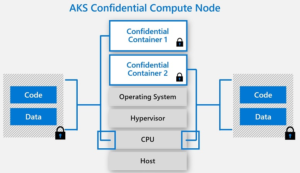
Now that the major cloud conferences are occurring and the PR agencies are pushing their client’s cloud predictions for next year. It’s time we look at what the tea leaves are saying about the evolution of cloud computing in 2023, focusing on areas of significant change.
I’ve been calling for the larger cloud providers to focus on multicloud for years. However, considering that this would require a major shift in how they market their technology, they haven’t done so.
I can understand why. Confusing the market and diluting the value of their specific technology is really a core motivation for not pushing multicloud. However, the smaller players see multicloud as a clear advantage and are all in, one way or another. The larger players, not so much.
It’s clear which way the cloud winds are blowing. We’re well into a reality of complex cloud deployments that leverage more than a single cloud provider most of the time.
So, the question is not, “Will the larger cloud providers promote multicloud deployments?” The question is, “How they will provide this technology?” The easy answer focuses on development, and if you’re doing that, you can’t miss the huge influence of containers and container orchestration, meaning Kubernetes.
Everyone is supporting some type of container-based development and container orchestration on their respective cloud platforms. However, what’s missing is turnkey technology that focuses on development and deployment of multicloud solutions. Or, distributed and heterogenous container orchestration and container development that can deploy containerized applications across public cloud providers.
This is nothing new, and indeed, there are technologies that can deploy and orchestrate containers across many different cloud providers now, and even across traditional on-premises platforms. What will be new is support of multicloud container orchestration and release of technology that makes it easy to build and deploy these systems using native cloud services that run across cloud providers.
The advantages of this for enterprises are easy to understand. You’re not limited to deployment on a single cloud provider and thus are able to find best-of-breed solutions on different cloud providers. You can leverage the best databases, artificial intelligence, serverless, etc.
If this does occur, why now? Many of the larger public cloud providers have been pushing back against deployment on anything outside of their “walled gardens.” A few things are happening now and will continue into 2023:
- Acceptance by enterprises that multicloud is the most likely end state. Some end up with multicloud on purpose; most get there through organic growth and by choosing different best-of-breed cloud services across cloud providers as a tactical business need.
- Acceptance by the larger cloud providers that multicloud is no longer something they can market around. It’s part of the technological zeitgeist at this point, and pushing back or avoiding it will likely backfire.
- Acceptance by developers that expanding their deployment reach across clouds, while not right for all applications, is an option that should produce better applications that use the exact technology they need, no matter what cloud it’s running on.
What happens if this shift to multicloud container orchestration becomes more of a reality in 2023? Not much, really. It’s going to take some time for enterprises to skill up in what this technology can do and how to use it properly. Moreover, there is always a great deal of time between technology providers announcing something and that something becoming available and usable.
The fact that we’re dealing with development and deployment of applications means that things will move that much slower. It’s not just releasing a cross-cloud container orchestration platform, but also building and deploying applications on that platform. It’s going to take years to evolve. I think it’s worth the wait. How about you?
Copyright © 2022 IDG Communications, Inc.


